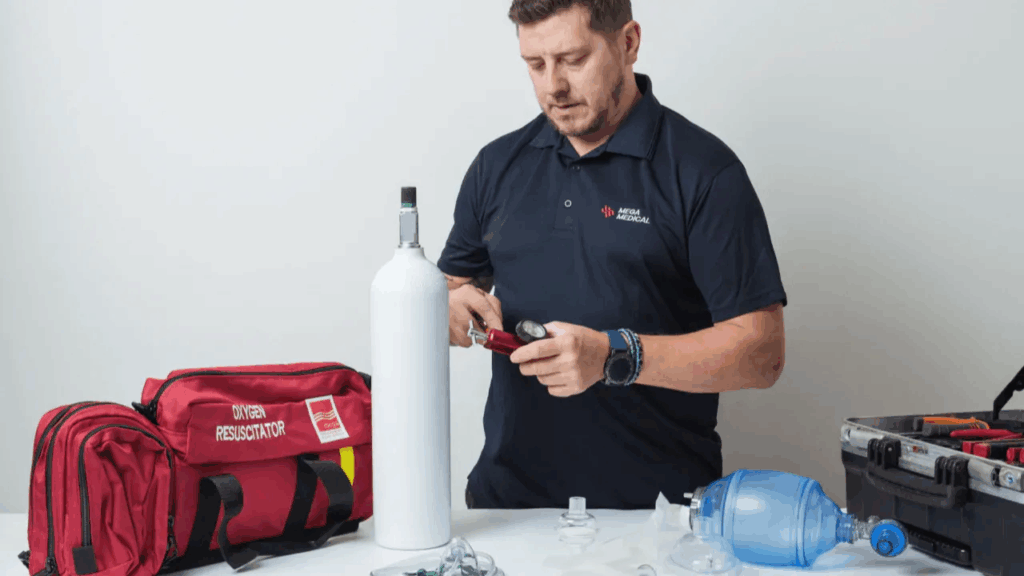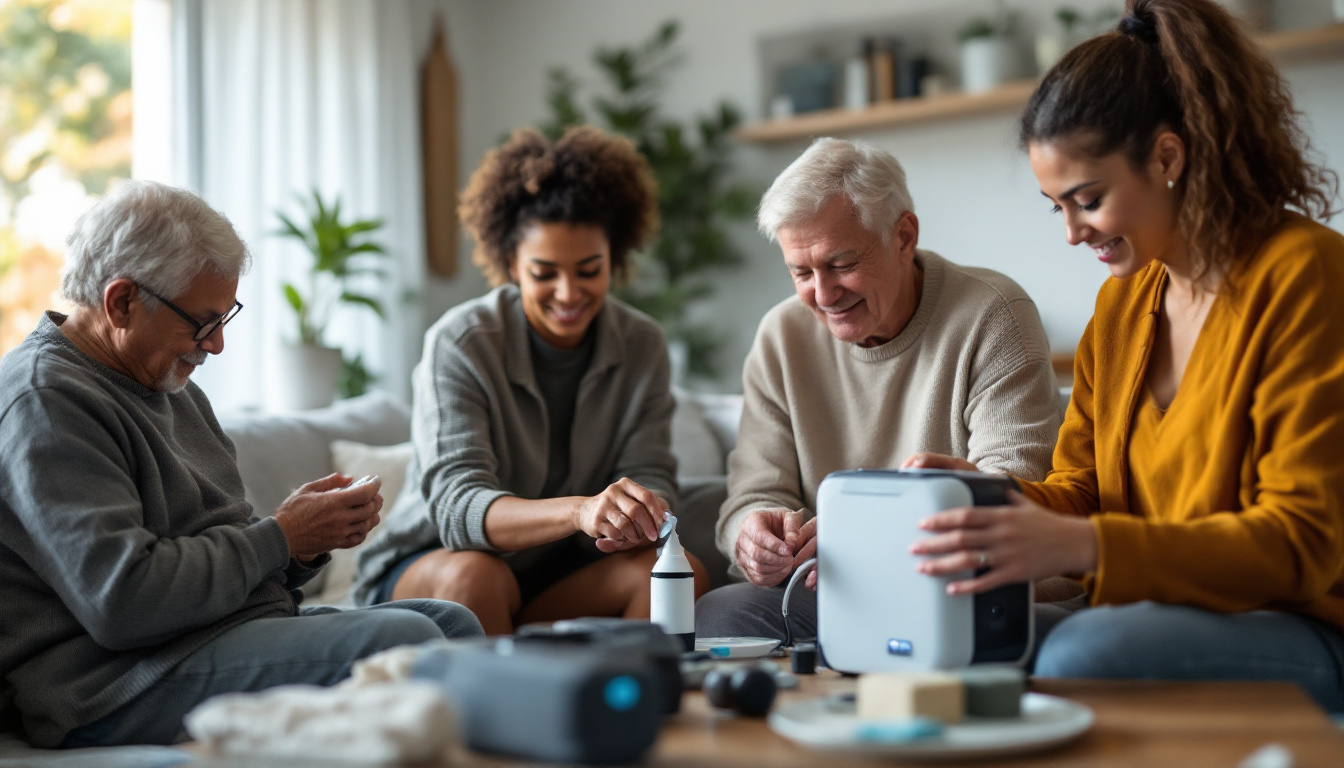In recent years, the demand for portable oxygen concentrators (POCs) has surged, particularly among Australians seeking greater mobility and independence while managing respiratory conditions. These compact devices are designed to provide supplemental oxygen to individuals who require it, allowing them to maintain an active lifestyle. This guide aims to equip potential buyers with the essential information needed to make an informed decision when selecting a portable oxygen concentrator.
Understanding Portable Oxygen Concentrators
Portable oxygen concentrators are medical devices that extract oxygen from the surrounding air, delivering it in a concentrated form to users. Unlike traditional oxygen tanks, POCs do not require refilling and can be used continuously, making them ideal for those who are frequently on the move.
Choosing the right portable oxygen concentrator is a significant decision that can greatly impact the quality of life for individuals with respiratory conditions. By understanding the various features, costs, and maintenance requirements, potential buyers can make informed choices that align with their needs.
How They Work
POCs operate using a process called molecular sieve technology, which separates oxygen from nitrogen in the air. The device draws in ambient air, filters it, and compresses the oxygen for delivery. This technology not only enhances the convenience of oxygen therapy but also reduces the weight and size of the equipment, making it easier for users to carry. Furthermore, many modern POCs are equipped with advanced sensors that monitor the oxygen levels and adjust the flow accordingly, ensuring that users receive the optimal amount of oxygen tailored to their specific needs.
Types of Portable Oxygen Concentrators
There are two primary types of portable oxygen concentrators: continuous flow and pulse dose. Continuous flow models deliver a steady stream of oxygen, while pulse dose models release oxygen in bursts when the user inhales. Understanding the differences between these types is crucial for selecting the right device based on individual needs. For instance, continuous flow devices may be more suitable for users who require higher oxygen levels during sleep or physical exertion, while pulse dose models can be advantageous for those who are more active and prefer a lightweight option that conserves battery life.

In addition to these two main types, there are also hybrid models that combine features of both continuous flow and pulse dose systems. These versatile devices can automatically switch between modes depending on the user’s activity level, providing a seamless experience for those who may need varying oxygen levels throughout the day. As technology advances, many portable oxygen concentrators now also come with user-friendly interfaces, allowing for easy adjustments and monitoring of settings, which can be particularly beneficial for elderly users or those who may not be as tech-savvy.
Read more at: Why a Portable Oxygen Machine Is a Smart Travel Companion
Key Features to Consider
When choosing a portable oxygen concentrator, several features should be taken into account to ensure that the device meets personal requirements and lifestyle preferences.
Weight and Portability
One of the most significant advantages of portable oxygen concentrators is their lightweight design. Most models weigh between 1.5 to 5 kilograms, making them easy to transport. Consider how often the device will be used outside the home and choose a model that fits comfortably within your lifestyle. Additionally, many manufacturers have designed their devices with ergonomic handles and shoulder straps, enhancing comfort during travel. Whether you are going for a leisurely stroll in the park or embarking on a long-haul flight, ensuring that the concentrator is easy to carry can significantly improve your overall experience.
Battery Life
Battery life is another essential factor. Some POCs come with rechargeable batteries that can last anywhere from 2 to 8 hours, depending on the flow settings. It is advisable to assess daily oxygen needs and choose a model that offers sufficient battery life for outings or travel without the need for frequent recharging. Furthermore, some models offer the option of an additional battery pack, which can be a lifesaver during extended trips or in situations where access to power sources may be limited. This flexibility allows users to enjoy greater freedom and peace of mind when planning their activities. Learn more about battery at https://academic.oup.com/milmed/article/179/1/1/4160772
Oxygen Output
The oxygen output of a concentrator is measured in litres per minute (LPM). Depending on the severity of the respiratory condition, users may require different flow rates. It is crucial to consult with a healthcare professional to determine the appropriate oxygen flow rate before making a purchase. In addition to fixed flow rates, some portable oxygen concentrators feature pulse dose technology, which delivers oxygen only when the user inhales. This can be particularly beneficial for those who are active, as it conserves battery life while still providing adequate oxygen support. Understanding these technical specifications can empower users to select a device that not only meets their medical needs but also enhances their quality of life.
Cost Considerations
Investing in a portable oxygen concentrator can be a significant financial commitment. Prices can vary widely based on brand, features, and technology. Understanding the costs involved will help in making a well-informed decision.
Initial Purchase Price
The initial purchase price of a portable oxygen concentrator can range from AUD 2,000 to AUD 10,000. It is essential to evaluate the features and benefits of each model in relation to its price to ensure value for money. Additionally, some brands may offer financing options or payment plans to ease the financial burden.
Ongoing Costs
Beyond the initial purchase, consider ongoing costs such as maintenance, replacement filters, and batteries. Regular maintenance is necessary to ensure the device operates efficiently, and these costs should be factored into the overall budget.
Insurance and Financial Assistance
In Australia, some health insurance policies may cover the cost of portable oxygen concentrators, either partially or fully. It is advisable to check with your insurance provider to understand your coverage options.
Government Assistance Programs
The Australian government offers various assistance programs for individuals with chronic respiratory conditions. These programs may provide financial support or subsidies for purchasing medical equipment, including portable oxygen concentrators. Researching available options can help alleviate some of the financial pressure associated with acquiring a POC. Click here to find more about pressure.
Where to Buy Portable Oxygen Concentrators
Finding the right supplier is crucial for ensuring a positive purchasing experience. There are several options available for buying portable oxygen concentrators in Australia.
Medical Supply Stores
Local medical supply stores often carry a range of portable oxygen concentrators. Visiting a store allows potential buyers to see the devices in person, ask questions, and receive guidance from knowledgeable staff. This hands-on experience can be invaluable in making the right choice.
Online Retailers
Online shopping offers convenience and often a wider selection of models. Reputable online retailers provide detailed product descriptions, customer reviews, and competitive pricing. However, it is essential to ensure that the retailer is trustworthy and offers a good return policy in case the device does not meet expectations.
Trial and Demonstration
Before making a final decision, it is advisable to trial the portable oxygen concentrator. Many suppliers offer demonstration units that allow users to experience the device in real-life scenarios.
Importance of a Trial
A trial period enables users to assess the comfort, usability, and effectiveness of the device. It is an opportunity to determine whether the concentrator meets individual needs and lifestyle requirements.
Consultation with Healthcare Professionals
Engaging with healthcare professionals is vital throughout the purchasing process. They can provide insights into the best models based on medical history and lifestyle, as well as offer guidance on proper usage and maintenance.
Maintaining Your Portable Oxygen Concentrator
Proper maintenance is essential for the longevity and efficiency of a portable oxygen concentrator. Regular care will ensure that the device continues to function optimally, providing the necessary oxygen support.

Regular Cleaning
Cleaning the device regularly is crucial to prevent the buildup of dust and debris, which can affect performance. Most manufacturers provide guidelines on how to clean various components, including filters and tubing. Adhering to these instructions will help maintain the device’s functionality.
Scheduled Maintenance Checks
In addition to regular cleaning, scheduling maintenance checks with a qualified technician can help identify any potential issues before they become significant problems. This proactive approach can save time and money in the long run.
Conclusion
Whether purchasing from a local medical supply store or an online retailer, it is essential to engage with healthcare professionals throughout the process. Their expertise will provide valuable insights and help ensure that the selected device is appropriate for individual circumstances.
With the right portable oxygen concentrator, Australians can enjoy greater freedom and independence, enabling them to lead active and fulfilling lives. Investing time in research and consideration will ultimately pay off in the form of improved health and well-being.
